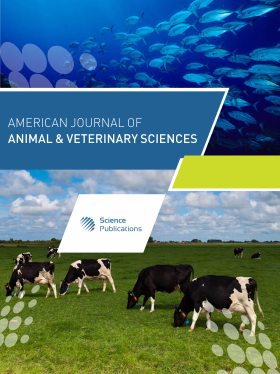Dietary Protein and Energy Levels at 3200 m Altitude for Slow-Growing Chickens
- 1 Faculty of Agronomy and Zootechnics, Universidad Nacional de San Antonio Abad del Cusco, Cusco, Peru
- 2 Faculty of Agricultural Sciences, Universidad de Panama, Panama
- 3 Faculty of Veterinary Medicine and Animal Science, Universidad Nacional Micaela Bastidas de Apurimac, Abancay, Peru
Abstract
The extent to which energy and protein (CP) levels can be reduced without impacting productivity in slow-growing chickens remains undetermined. The treatments were conducted to evaluate the effect of dietary CP (17.5, 19, and 20.5%) and energy (2850-2950 kcal ME/kg) on slow-growing chickens using an ideal protein concept at a high altitude (3200 m). We used a total of 144 slow-growing chickens. The experiment lasted for eight weeks, a total of six treatments with three replicates each and eight chickens per replicate were used. Body Weight Gain (BWG) showed differences only in the growing chickens, for CP and the energy × CP interaction, the lowest BWG was at 17.5% CP (2850 kcal ME/kg) and 19.0% at 2950 kcal ME/kg (p<0.01) and higher for other interactions. BW and BWG maximized at 19% CP (2850 kcal ME/kg) and 17.5% CP (2950 kcal ME/kg). Feed intake was lower at 17.5 and 20.5% CP for respectively energy levels (p<0.01). Feed conversion was higher (finishing phase) with 20.5% CP (2850 kcal ME/kg) and 19% CP (2950 kcal ME/kg). Carcass yield was unaffected by treatment (p>0.05). Abdominal fat increased with high energy (p<0.05). At both energies, maturity weight was highest at the lowest CP; growth rate (kg/d) was raised with higher dietary CP (2850 kcal ME/kg). The time to maximize growth rate decreased with higher CP at low energy but remained constant at high energy. There is an interaction effect between energy and crude protein in the diet, where the highest response is with 19% PC for 2850 kcal ME/kg and 17.5% for 2950 kcal ME/kg.
The extent to which energy and protein (CP) levels can be reduced without impacting productivity in slow-growing chickens remains undetermined. The treatments were conducted to evaluate the effect of dietary CP (17.5, 19, and 20.5%) and energy (2850-2950 kcal ME/kg) on slow-growing chickens using an ideal protein concept at a high altitude (3200 m). We used a total of 144 slow-growing chickens. The experiment lasted for eight weeks, a total of six treatments with three replicates each and eight chickens per replicate were used. Body Weight Gain (BWG) showed differences only in the growing chickens, for CP and the energy × CP interaction, the lowest BWG was at 17.5% CP (2850 kcal ME/kg) and 19.0% at 2950 kcal ME/kg (p<0.01) and higher for other interactions. BW and BWG maximized at 19% CP (2850 kcal ME/kg) and 17.5% CP (2950 kcal ME/kg). Feed intake was lower at 17.5 and 20.5% CP for respectively energy levels (p<0.01). Feed conversion was higher (finishing phase) with 20.5% CP (2850 kcal ME/kg) and 19% CP (2950 kcal ME/kg). Carcass yield was unaffected by treatment (p>0.05). Abdominal fat increased with high energy (p<0.05). At both energies, maturity weight was highest at the lowest CP; growth rate (kg/d) was raised with higher dietary CP (2850 kcal ME/kg). The time to maximize growth rate decreased with higher CP at low energy but remained constant at high energy. There is an interaction effect between energy and crude protein in the diet, where the highest response is with 19% PC for 2850 kcal ME/kg and 17.5% for 2950 kcal ME/kg.
DOI: https://doi.org/10.3844/ajavsp.2024.435.443

- 350 Views
- 191 Downloads
- 0 Citations
Download
Keywords
- Energy
- Protein Level
- Feed Intake
- Growth Rate
- Slow-Growing Chicken
- Ideal Protein Profile
